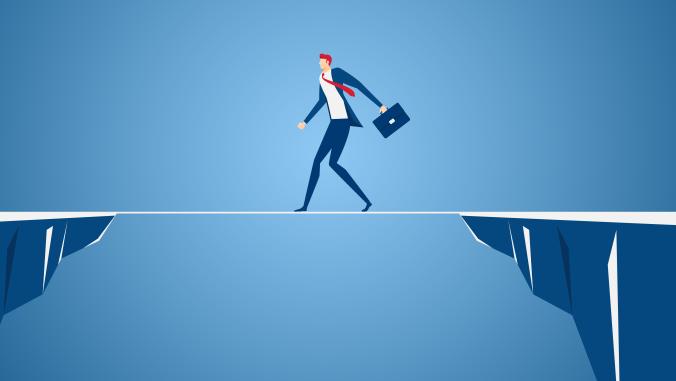This large money manager created a new way to invest in green bonds
VanEck, which manages more than $43.4 billion in assets, has launched the first U.S.-listed exchange-traded fund for green bonds. What does this mean for the broader area of sustainable investing?

President Donald Trump has made his support for fossil fuel projects clear, but that hasn’t thwarted investors’ appetite for a financial instrument known as green bonds.
Case in point, last month VanEck launched the first U.S.-listed fixed-income exchange-traded fund (ETF) for green bonds, the VanEck Vectors Green Bond ETF, which offers investors a new way to invest in projects that help mitigate the impacts of climate change.
The ETF allows investors to invest in a diversified portfolio of U.S. and foreign green bonds, and it will track the performance and yield characteristics of the S&P Green Bond Select Index.
With asset managers such as BlackRock Inc. and State Street Corp. launching green bond index funds in Europe, how will these funds affect the overall green bond landscape?
Making an impact without giving up returns
For VanEck, an investment management firm with $43.4 billion in assets under management, launching a green bond ETF made sense because it aligned with the firm’s goal of creating forward-looking investments, including in areas that previously have been difficult for investors to access, said William Sokol, a product manager at VanEck.
Green bonds, in particular, fit into this category because they are a relatively new type of investment; the first green bond was issued in 2007. So far, investors largely have been constrained to buying the underlying bonds themselves, or to investing in higher cost actively managed funds such as mutual funds.
But as the number of green bond issuances grew and the diversity of green bonds increased, Sokol said the size of the green bond market was large enough to justify launching an ETF that tracks the green bond market.
"There are a lot of options on the equity side for ESG investments, but there really hasn’t been a lot for fixed-income," said Sokol. "You are pretty limited if you want pure green bond exposure."
Overall, green bonds have grown rapidly in recent years. According to a recent report by Moody’s Investors Service, total green bond issuances are projected to reach over $200 billion in 2017 from $93.4 billion in 2016.
"The interesting thing about green bonds is that an investor with a global fixed-income allocation can reallocate into green bonds without significantly altering the risk and return of their portfolio," said Sokol.
Henry Shilling, a senior vice president at Moody’s, said that the launch of the ETF, in part, reflects a maturation of the green bond market.
"It suggests that there is now not only sufficient interest on the part of investors, but that there are enough green bonds out there to manage an ETF portfolio with sufficient liquidity," said Shilling.
There are a lot of options in the equity side for ESG investments, but there really hasn’t been a lot for fixed-income.
What are green bonds?
Simply put, green bonds are a financial instrument used to finance projects or initiatives seen as having some sort of environmental or social component, such as a renewable energy installation or climate-resilient infrastructure projects. Green bonds operate similarly to non-green bonds as any institution with bonding authority can issue green bonds including financial institutions, municipalities, NGOs and sovereignties.
Green bonds can be used to finance different types of green projects, and recently Apple has used green bonds to partially finance the company’s new headquarters in Cupertino. Starbucks has embraced a slightly different twist on the concept that it calls a "sustainability bond," which it is using to fund some of its sustainable agriculture and corporate social responsibility initiatives.
A primer on ETFs
Along with the sudden rise in green bonds, ETFs are also gaining traction with investors. An ETF is a security that tracks an index, a commodity, bonds or a basket of assets such as an index fund and trades similarly to stocks trading on a stock exchange, according to Investopedia.
ETFs are often compared to mutual funds, but they differ, in part, because mutual funds are actively managed by professionals, while ETFs often track an existing index fund.
VanEck’s new fund tracks an index launched by S&P Dow Jones Indices called the S&P Green Bond Select Index, which captures the most liquid and tradeable segment of green-labeled bonds issued globally.
A few U.S. mutual funds track green bonds including the Calvert Green Bond Fund and Natixis Global Asset Management's Mirova Global Green Bond, which launched just before VanEck’s ETF.
But Sokol said that some investors prefer ETFs over mutual funds because ETFs generally have lower fees, are more transparent and can be bought or sold throughout the day on a stock exchange.
Green bonds under Trump
At first glance, green bonds would not appear to be an area where investors would flock, given Trump’s expressed support for fossil fuels and his intentions to undo President Barack Obama's Clean Power Plan.
Yet, Moody’s Shilling said that he has seen no evidence so far of a pullback in U.S. green bond initiatives.
"Notwithstanding the policies of the Trump administration, there are others who do believe that climate change is real and they also recognize that we need to find solutions to bring about a reduction in greenhouse gas emissions," said Shilling.
Meg Voorhes, director of research at US SIF: The Forum for Sustainable and Responsible Investment, adds that initiatives outside the federal government will have an impact on sustainable investing going forward.
"Even as the Trump administration signals that it’s going to pull back or try not to enforce the Clean Power Act, there are certainly plenty of initiatives at the state and municipal level that are going to continue to drive companies and investors," said Voorhes.





